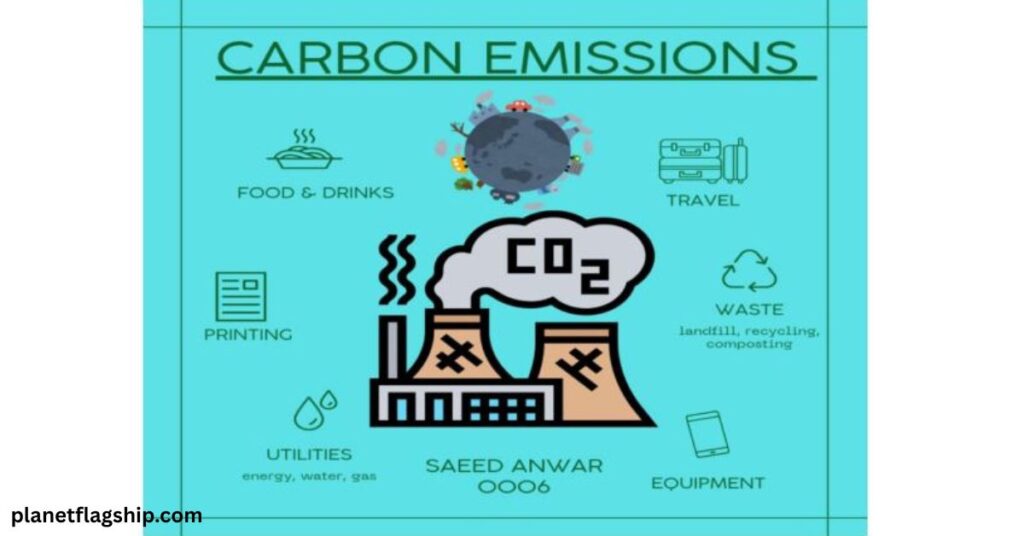INTRODUCTION
The global shift towards remote work, which initially became a necessity during the COVID-19 pandemic, has evolved into a long-term trend, reshaping how we work, commute, and even consume energy. Future of Remote Work is no longer just a workplace flexibility perk; it has become a vital component in conversations about climate change and carbon emissions. But how impactful is this shift on the environment? Can working from home really help fight climate change?
Companies worldwide have adopted hybrid or fully remote models, leading to significant changes in commuting patterns, office space usage, and energy consumption. While remote work offers flexibility and cost savings, its environmental impact, particularly in terms of carbon emissions, remains a critical topic of discussion.
As governments and companies aim to reduce carbon footprints, remote work stands out as a low-hanging fruit. By reducing the need for daily commuting, office energy consumption, and business travel, remote work appears to be a win-win for both workers and the planet. However, it’s also important to critically examine potential drawbacks, such as increased home energy use and emissions from digital infrastructure.
This article examines the impact of remote work on carbon emissions, analyzes the data, and considers the future implications for sustainability through remote work practices. We’ll also share key takeaways and suggest ways individuals and organizations can adopt climate-conscious remote work strategies.
The Rise of Remote Work
Remote work has been on the rise for over a decade, but the pandemic drastically accelerated its adoption. According to a 2022 McKinsey report, over 58% of employees in developed countries have the option to work remotely at least part-time. Many tech companies have now permanently shifted to fully remote or hybrid models.
American Community Survey
For data on transportation demand and socioeconomic characteristics, we utilize the American Community Survey (ACS), conducted annually by the U.S. Census Bureau (Census Bureau, 2019, 2021). We focus on three categories of ACS respondent information: demographics, housing characteristics, and employment statistics. We extracted population, household income, employment industry, commute mode to work, car ownership, and WFH from ACS (Table 1).
The ACS data is collected on an ongoing basis and released in both one-year and five-year estimates. The 1-year estimates provide frequent updates for metropolitan areas with 65,000 or more residents, while 5-year estimates increase statistical reliability by combining 5 years of collected data. We use the one-year estimate ACS data in 2019 and 2021 for our analysis.
ACS data for 2020 was unavailable due to a significant reduction in response rate during the pandemic.
| Variable | Mean | Std.dev | Min | Median | Max | P value | Unit |
| Transportation emissions per capita, 2019 | 9.92 | 3.79 | 2.5 | 9.24 | 21.81 | 0.34 | kgCO2 |
| Transportation emissions per capita, 2021 | 9.54 | 3.67 | 2.41 | 8.86 | 20.78 | 0.27 | kgCO2 |
| Public transportation to work, 2019 | 2.43 | 3.91 | 0 | 1.37 | 33.19 | 0 | Pct |
| Public transportation to work, 2021 | 1.41 | 2.41 | 0 | 0.85 | 24.61 | 0 | Pct |
| Log of public transportation to work, 2019 | 0.32 | 1.05 | -2.3 | 0.32 | 3.5 | 0.69 | Log(Pct) |
| Log of public transportation to work, 2021 | -0.18 | 1.02 | -2.21 | -0.15 | 3.2 | 0.52 | Log(Pct) |
| Work From Home (WFH), 2019 | 5.5 | 1.98 | 2.2 | 5.1 | 13.7 | 0.13 | Pct |
| Work From Home (WFH), 2021 | 15.23 | 6.66 | 3.4 | 14.3 | 36.3 | 0.36 | Pct |
| 3+car households, 2019 | 22.44 | 5.13 | 5.8 | 22.2 | 37.4 | 0.39 | Pct |
| 3+car households, 2021 | 22.41 | 5.06 | 6.9 | 21.8 | 36.5 | 0.41 | Pct |
Commuting and Transportation Emissions

One of the clearest environmental benefits of remote work is the reduction in transportation emissions. According to the U.S. Environmental Protection Agency (EPA), transportation accounts for 29% of total greenhouse gas emissions in the U.S. with personal vehicle use for commuting being a major contributor.
Example:
If 3.9 million people work from home half the time, it could save 54 million tons of greenhouse gas emissions per year (Global Workplace Analytics, 2021).
READ MORE: Eco Certifications: Do They Really Mean Anything?
Energy Use: Office vs. Home
While office buildings consume large amounts of energy for lighting, heating, cooling, and electronics, remote work shifts this energy demand to homes. The net effect on carbon emissions varies:
• Positive: Homes are generally smaller and require less energy than large commercial spaces.
• Negative: Poorly insulated homes or increased reliance on heaters and air conditioning may reduce environmental gains.
A 2021 study published in Joule estimated that shifting to remote work could reduce overall energy use by up to 12%, depending on location and individual behavior, and reduction in Commuting-Related Emissions.
Transportation accounts for nearly 29% of U.S. greenhouse gas emissions, with passenger vehicles contributing the largest share (EPA, 2023). Remote work eliminates daily commutes, significantly reducing fuel consumption and tailpipe emissions. A study by the International Energy Agency (IEA, 2021) found that if all employees who could work remotely did so one day a week, global carbon emissions could drop by 24 million metric tons annually, equivalent to removing 5 million cars from the road.
However, the impact varies by region. In cities with robust public transportation, the reduction may be less pronounced than in areas that rely heavily on cars. Additionally, some remote workers may increase non-commuting travel, offsetting some benefits (Hook et al., 2020).
Decreased Office Energy Consumption

Commercial buildings consume 18% of U.S. energy, with offices being a major contributor (EIA, 2022). Fewer employees in offices mean lower heating, cooling, and lighting demands. A report by Global Workplace Analytics (2021) estimates that if employees worked remotely half the time, office energy use could decline by over 30%, resulting in substantial reductions in emissions.
Yet, this benefit depends on whether companies downsize office spaces or maintain underutilized buildings. Some firms adopt hot-desking(shared workspaces) to optimize energy efficiency, while others keep offices open for hybrid arrangements.
Shifts in Urban Infrastructure and Land Use
As remote work reduces the need for centralized offices, cities may see decreased traffic congestion and lower demand for parking spaces. This could encourage urban planners to repurpose commercial real estate into green spaces or residential units, further reducing emissions (IPCC, 2022).
However, if remote workers relocate to suburban or rural areas, they may exacerbate sprawl and car dependency, partially negating the environmental benefits.²
The Role of Hybrid Work Models.
While full-time remote work offers substantial emission reductions, hybrid work models also contribute positively. A study by Cornell and Microsoft reported that employees working remotely two to four days a week can lower their carbon footprint by 11% to 29%. However, working remotely only one day a week yields a modest 2% reduction, as the benefits are offset by factors such as increased non-commuting travel.
Lifestyle and Infrastructure Considerations
Individual lifestyle choices and infrastructure influence the environmental impact of remote work. For instance, increased residential energy consumption for heating, cooling, and electronic devices can offset some emission reductions achieved by eliminating commutes. Moreover, the use of energy-efficient appliances and renewable energy sources at home plays a crucial role in maximizing environmental benefits.
Additionally, the choice of remote work locations, such as co-working spaces or cafes, can influence overall emissions. A study highlighted that commuting to these “third places” could offset much of the reduction in emissions from traditional commuting.
Digital Infrastructure and Cloud Emissions
Working remotely increases the use of digital tools, including Zoom calls, cloud storage, VPNs, and servers. Data centers consume vast amounts of energy. However, many tech companies, such as Google and Microsoft, are investing in renewable energy to power their servers.
Fact:
The ICT sector is responsible for approximately 2% of global carbon emissions, roughly equivalent to the airline industry (IEA, 2022).
Business Travel and Remote Meetings
Remote work culture has minimized the need for in-person meetings and corporate travel. Virtual conferences have become the norm, saving thousands of flights annually.
Example:
During the pandemic, SAP reported reducing its CO₂ emissions by 50% in just one year, primarily due to a decrease in business travel.
Hybrid Work and Urban Sustainability

Hybrid models (e.g., 2–3 days in-office) may offer a balanced approach. They can reduce peak-time transportation and allow businesses to reduce office space, ultimately lowering their carbon footprint.
Moreover, long-term remote work can impact city planning, reduce traffic congestion, and support the decentralization of jobs, ultimately promoting sustainability in rural areas as well.
Challenges and Trade-Offs
While remote work offers many environmental benefits, it’s not without trade-offs:
• Increased home electricity and internet usage
• Digital inequality (not everyone has access to stable internet or energy-efficient homes)
• Overreliance on disposable tech (headsets, routers, etc.)
Organizations should guide energy-efficient practices at home and offer support to employees in establishing sustainable home offices.
Frequently Asked Questions
Can remote work really help reduce carbon emissions?
Yes, working from home cuts down daily commutes, business travel, and office energy use — all of which significantly reduce overall carbon emissions.
Does working from home increase energy use at home?
It can. Heating, cooling, and electronics at home add to energy use, but efficient appliances and renewable sources can minimize that impact.
How does hybrid work compare to full remote in terms of environmental benefits?
Hybrid work still helps. Just 2–3 remote days a week can lower a person’s carbon footprint by up to 29%, especially if paired with reduced office energy use.
Is the internet and cloud usage during remote work a big polluter?
Digital tools do consume energy, but tech giants are increasingly using renewable energy to power their servers, making it more eco-friendly than ever.
What can companies do to support sustainable remote work?
They can offer energy-saving tips, help employees set up efficient home offices, and downsize physical office spaces to cut unnecessary emissions.
Conclusion
Remote work, once considered a temporary solution, has emerged as a powerful tool for reducing carbon emissions. By reducing commuting, decreasing energy consumption in office buildings, and limiting business travel, remote work offers a cleaner, more sustainable path forward. However, it is crucial to address the hidden environmental costs such as increased home energy use and digital emissions, to make the model truly green.
For remote work to fulfill its environmental promise, both individuals and companies must adopt conscious practices. This includes using energy-efficient appliances, choosing renewable energy sources, minimizing digital waste, and promoting a hybrid model that strikes a balance between flexibility and sustainability.
Governments and businesses should also invest in sustainable infrastructure and provide incentives for eco-friendly remote work setups. As we navigate the post-pandemic world, remote work could become more than a productivity model. It could be a key strategy in the fight against climate change.
By assessing the carbon footprint of a knowledge organization, we found that indirect emissions and travel-related emissions dominate. This framework is built on three major activities: avoiding and reducing emissions while offsetting the remaining ones. It is commonly argued that organizations have little control over indirect emissions; however, our framework demonstrates that knowledge organizations, whose carbon footprint is primarily based on indirect emissions, can use simple policy changes to effectively manage their emissions. Though our study focused on knowledge organizations, the framework presented here can also be applied to any other type of organization that wants to mitigate travel-related emissions.
Call to Action:
Whether you’re an employee or an employer, your choices matter. Embrace smart energy habits, reduce unnecessary travel, and advocate for green work policies. Together, we can redefine work and reshape our planet’s future.
References
1. Global Workplace Analytics Report, 2021
2. International Energy Agency (IEA), 2022
3. Choi, D. et al. (2023). Climate mitigation potentials of teleworking are sensitive to changes in lifestyle and workplace dynamics. 4. McKinsey & Company – Future of Work Report, 2022

John is a professional blogger and passionate advocate for environmental sustainability. With years of experience exploring eco-friendly practices and green innovations, he shares insightful articles on Planet Flagship to inspire a sustainable future. John’s expertise lies in making complex environmental topics accessible and actionable, empowering readers to make meaningful changes for the planet.
